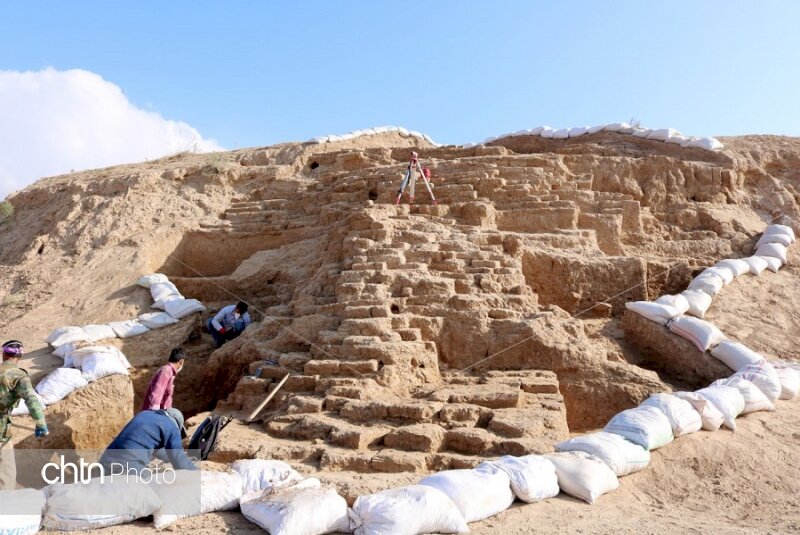Remnants of Achaemenid fortress unearthed in northeast Iran

TEHRAN – Iranian archaeologists have discovered remnants of an ancient fortress, believed to date back to the Achaemenid era (c. 550-330 BC), during a survey held across Tepe Rivi in the northeastern province of North Khorasan.
“In a part of the urban structure in Rivi, we came across the remains of a fortress whose architectural plan is quite clear and good findings have been obtained from this building, and we believe that this complex was flourishing until the Parthian period (247 BC – 224 CE),” Mohammad-Javad Jafari , who heads the archaeological excavation, said on Thursday.
Archaeological research works at Rivi started in 2012. Since then archaeologists accessed remains of settlements from the Bronze and Iron Age, the Achaemenid, the Parthian, the Sassanid dynasties, and the early Islamic period.
Earlier this year, a number of historical clay stamps, estimated to date from the Achaemenid and Parthian eras, were discovered in the ancient site. “The seals were found alongside clay urns in a large hall and the seals are imprinted in a variety of geometric patterns [depicting] plants, animals, and human figures. Studying the findings can yield valuable information on the economy, culture, and arts of the ancient societies,” Jafari said.
“These stamps represent the widespread and complicated economic relations that people of the time had with other communities in such a way that made them bring together and store goods.” Evidence suggests that residents of this area sealed the urns that were loaded with particular goods then tied them with ropes, the archaeologist said.
The Achaemenid Empire (550–330 BC) was the largest and most durable empire of its time, stretching from Ethiopia, through Egypt, to Greece, to Anatolia (modern Turkey), Central Asia, and to India.
The Parthian Empire (247 BC – 224 CE), also known as the Arsacid Empire, was a major Iranian political and cultural power in ancient Iran. The Parthians largely adopted the art, architecture, religious beliefs, and royal insignia of their culturally heterogeneous empire, which encompassed Persian, Hellenistic, and regional cultures. At its height, the Parthian Empire stretched from the northern reaches of the Euphrates, in what is now central-eastern Turkey, to eastern Iran.
AFM/MG

Leave a Comment